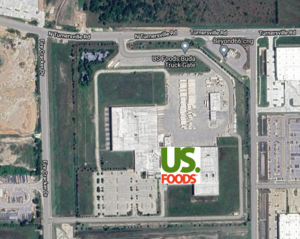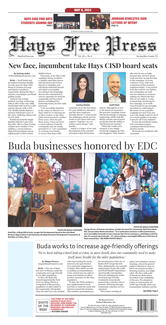By Andy Sevilla
Strong emotions were reignited in Buda as city staffers informed council that two prospects were looking to develop affordable housing rental units in the city.
Previously failed affordable housing proposals earlier this year are coming back to Buda for a second look.
In January, three developers interested in pursuing the Texas Department of Housing and Community Affairs (TDHCA) Low-Income Housing Tax Credit (LIHTC) program looked to build affordable rental units in Buda.
With much resistance, only one of the three projects gained support from council – which helps the developers’ LIHTC scoring criteria – but ultimately the federal subsidy was not granted to any developer looking to build in Buda.
Now, with the LIHTC application opening fast approaching for 2015, two of those former prospects are back, according to Buda Planning Director Chance Sparks.
AmTex Buda and Piscerne Longhorn Landing are in the process of identifying potential sites, though neither has formally asked for city action regarding potential applications.
“As a society we all think it’s a good thing and we try to do as much as we can to help the less fortunate, but most people don’t want (affordable housing rental units) next to their home,” Buda Mayor Todd Ruge said in a telephone interview Monday.
Concerns of increased crime grew on the dais, with some council members mentioning an alleged car theft ring at an affordable housing project.
Council member George Hahn reminded the council that during discussions earlier this year, he presented statements by UCLA and Berkley sociology professors stating that no matter how well managed an apartment complex may be, there is always a risk for increased crime in or around the area.
“My big concern is that they have an adequate screening process to ensure that those folks that move into those areas are the young urban people that are just starting out,” Hahn said at the Nov. 12 council LIHTC workshop. “Obviously they’re not going to be able to move to Buda and pay the exorbitant cost that’s associated with living here. However, at the same time, I’ve had people tell me that that’s why they moved here.”
Hahn said some Buda residents have struggled in a little one-bedroom apartment and saved money, did everything they needed to do, to get a nice home in the city. He said those residents don’t want to see low-income housing move in next door to them.
But proponents say the proposed affordable housing projects aren’t public housing or the Section 8 voucher program.
The LIHTC program began in 1986 and is an indirect federal subsidy to encourage investment and development of affordable rental housing. In Texas, the program is administered by TDHCA and is designed to provide a source of equity financing, maximize the number of affordable units in the state’s housing supply, ensure the housing’s maintenance and operation and prevent its loss due to poor maintenance, low quality and larger issues like gentrification.
“It’s noteworthy for citizens and everybody to be reminded that this is the largest housing program in the nation,” Council Member Wiley Hopkins said. “It’s highly sought after.”
With Buda’s estimated 7.5 percent of residents below poverty level, per U.S. Census 2008-2012 data, Ruge wonders where are the affordable housing renters going to come from? He asked if Austinites would be the ones filling the affordable housing vacancies in Buda only to then turn around and work in the Capital City?
A big concern in previous affordable housing discussions included site location.
AmTex Buda, the developer who received council support earlier this year for an affordable housing project, had proposed to develop rental units in industrial zoned areas of the city.
“We’re fairly land-locked and we want to have that land available when a company wants to come and bring some jobs,” Ruge said.
Also, sexually oriented businesses and payday loan-type businesses can only locate in industrial-zoned properties in Buda, Council Member Eileen Altmiller said, adding that she wouldn’t want any families living near that.
The most conducive area to build affordable housing in Buda would be in the Green Grove areas of town, Ruge said, where you have a lot of mixed-use development.
For council member Bobby Lane, “the basic question I would have related to site selection would be: what are we zoned for in the locations they might want to go to?” He further added that if a property is not the correct zoning, for him that would be the end of the conversation.
In Buda, however, there is no more multifamily-zoned property available inside the city limits, Sparks said. Therefore any other multifamily project wanting to locate in Buda would need to seek a rezoning decision.
“I’m with Bobby (Lane), if it’s not the right zoning for it, I’d be against it,” Hahn said.
Affordable housing shouldn’t be pushed into a corner, Ruge said. The whole idea of the program is almost assimilation, he said, you want it in areas with many different types of housing and businesses.
“One of the objectives is you don’t want it on the edge of town where there is nothing there, because it’s almost, segregation is what it is,” Ruge said. “And that’s one of the things we want to avoid. Personally, that’s one of the things we didn’t avoid last time around.”
Ruge said he wil look at each project individually and judge it on its merits.








